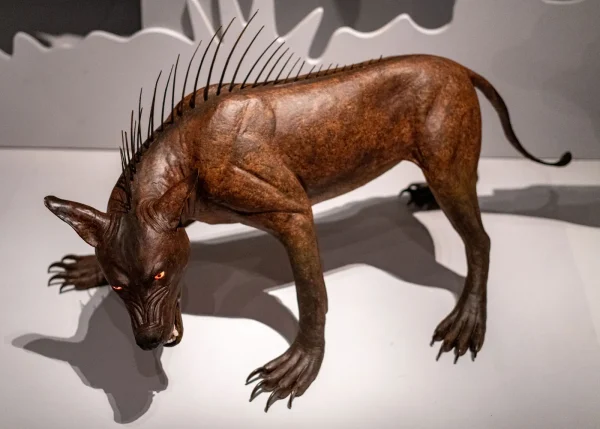The Legend of the Chupacabra
Who or What is This Creature?
February 6, 2025
Origin Of The Chupacabra
The Chupacabra is popular folktale in Latin America, a mythical creature that is said to kill animals by sucking their blood. The name translates to “Goat Sucker” in Spanish. Some say it looks like a Bat, a Reptilian Alien, or a Kangaroo with a reptilian body. Others say it has long, sharp spines, frog-like skin, or furry lizard-like skin. The Chupacabra is said to lurk at first and prey on livestock, such as goats, sheep, and cattle. The impact on these has become a part of of Latin America folktale and entertainment.
Stories of the Chupacabra are told across much of Latin America and the southwestern United States. In 2010, biologist Barry O’Connor concluded that all the Chupacabra reports in the United States were simply coyotes infected with the parasite Sarcoptes Scabiei, whose symptoms would explain most of the features of the chupacabra; they would be left with little fur, thickened skin, and a rank odor. The Chupacabra soon found out its way into popular culture. Both types of creatures served as monsters in low – budget motion pictures.
 Reports?
Reports?
Chupacabras were first reported in 1995, in Puerto Rico, where they were blamed for attacks on goats, sheep, and other domestic animals, supposedly leaving uneaten carcasses that were drained of blood. A different type of Chupacabra was also reported in many places. These Chupacabras were smaller and stood upon four feet.
Another report was from my dad, he lived in Brownsville, Texas at the time. One day he heard something outside like laughing and then heard the goats running and others were just screaming. My dad lived on a farm where there were many goats, sheep, and horses. The next day he woke up and smelled something so horrid the whole neighborhood came to the house. When my dad woke up to feed the roosters like he always did, he saw half of their goats and sheep dead with blood everywhere and their stomaches were ripped open. My dad always told me about other folktales but this one seems so real.
Sources:
https://www.britannica.com/topic/chupacabra
https://en.wikipedia.org/wiki/Chupacabra#:~:text=In%202010%2C%20University%20of%20Michigan,thickened%20skin%2C%20and%20a%20rank
https://www.amnh.org/exhibitions/mythic-creatures/land/modern-myths
 Reports?
Reports?
